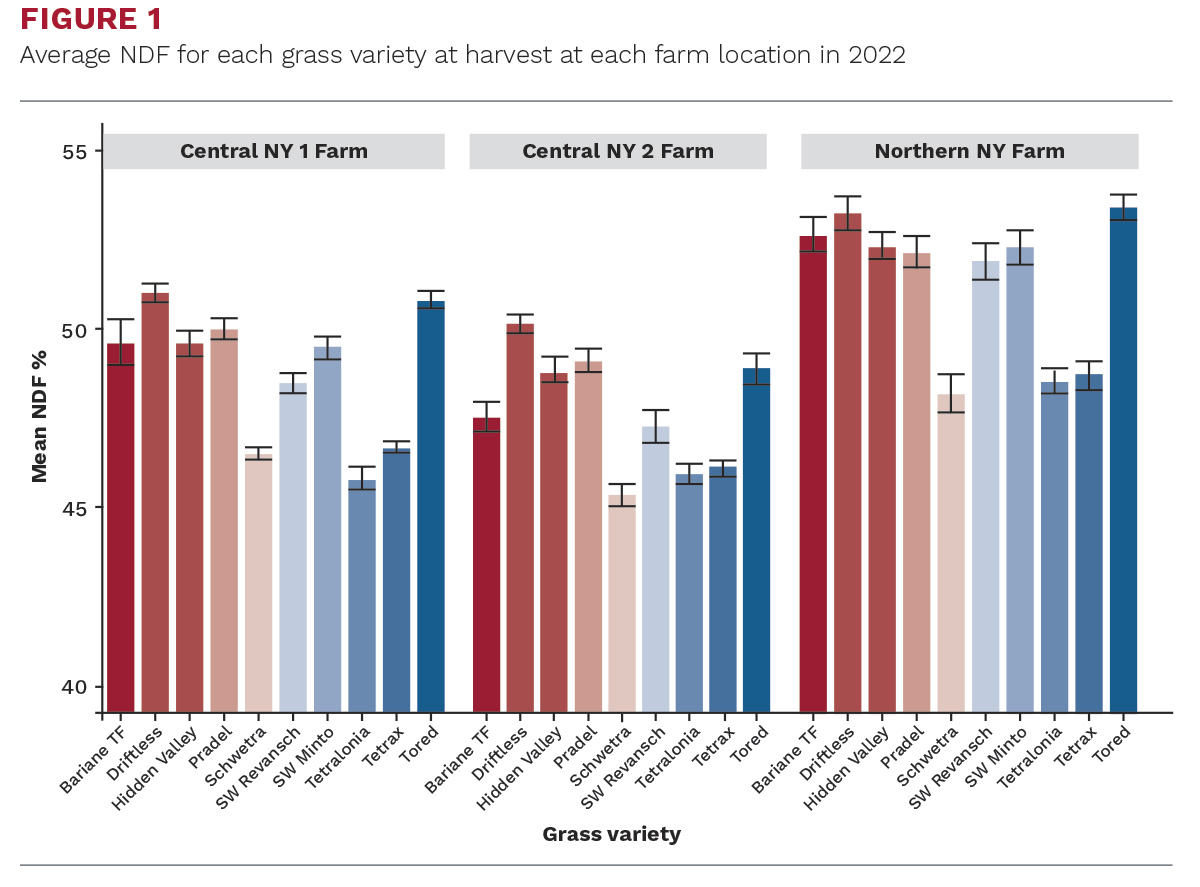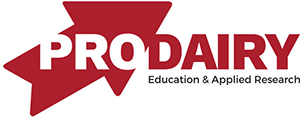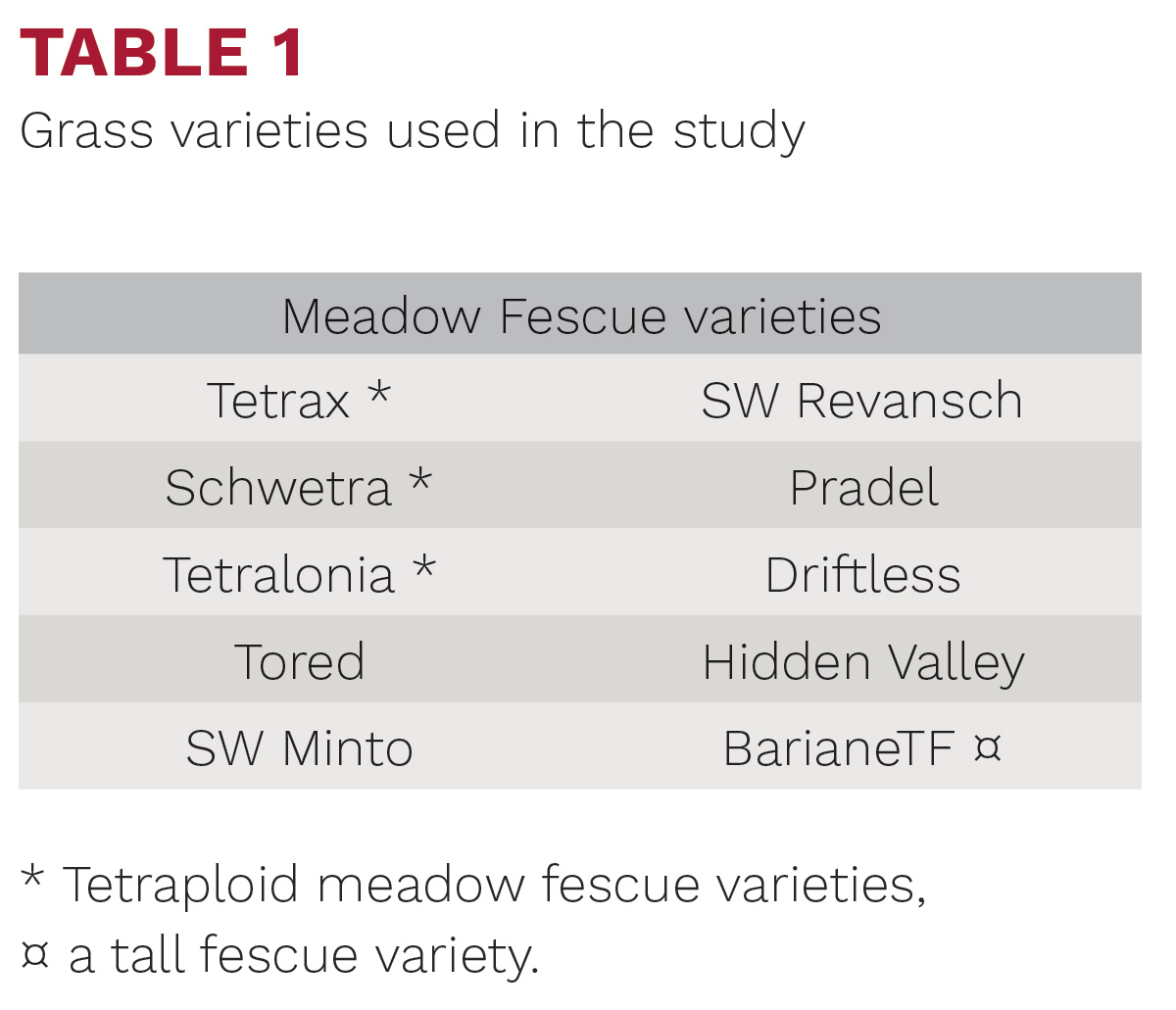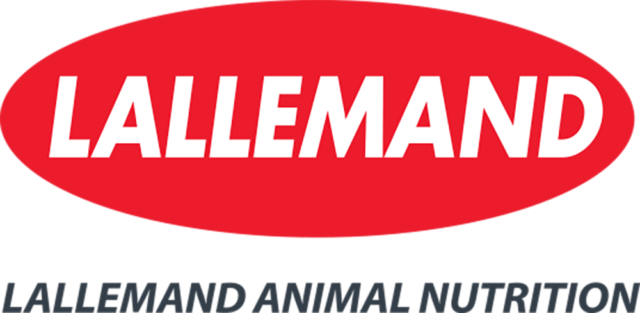Seeding alfalfa with a grass produces a mixed forage with higher neutral detergent fiber digestibility (NDFD), important for high-producing dairy cows. Meadow fescue (MF) grass varieties originated in Europe and North Africa and over the past decade, our lab has been investigating opportunities to seed alfalfa with meadow fescue grass varieties to improve the quality of alfalfa-grass mixtures for high-producing dairy cows. Given its hardy nature, persistency during the harsh winters in the Northeast is not typically an issue. Relative competitiveness and qualities of varieties, however, is largely unknown in the region.
2021 AND 2022 FIELD TRIALS
During the spring of 2021 and 2022, field trials were carried out on three commercial dairy farms in New York (N.Y.); two centrally located and one farm in northern N.Y. Two of the field plots were seeded in the spring of 2020 and one was seeded in the spring of 2021. Timing of first cutting is particularly important for dairy producers to achieve high-quality forage because fiber accumulates faster in the spring, leading to reduced NDFD. Therefore, our objective was to assess nutritive value of MF cultivars in N.Y. at spring harvest.
METHODOLOGY
Nine MF varieties were seeded, including three tetraploid and six diploid varieties with four field replicates at each farm, at three different seeding rates (one, two, and three lbs./acre; Table 1). One tall fescue variety was seeded for comparison.
Harvest date of the forage crop is typically based on the maturity of the alfalfa and sample collection for this study was conducted shortly before field harvest in both years to evaluate grass quality of varieties around the time of field harvest. All plots were in farm fields and sampled prior to spring mowing. Grass samples were harvested using a handheld trimmer at a four-inch stubble height. Samples were analyzed for neutral detergent fiber (NDF), acid detergent fiber (ADF), crude protein (CP), in vitro true digestibility (IVTD) at 48 hours, NDFD, and lignin. Grass proportions were also estimated at the three sites by visual evaluation.
RESULTS
Increased seeding rate resulted in higher grass proportions in the grass: alfalfa mix on the two central N.Y. farms in 2022, ranging from 18 to 34 percent when seeded at one lb./acre and between 26 to 38 percent when seeded at three lbs./acre. On the northern N.Y. farm site, grass proportion averaged 20 percent when seeded at one lb./acre and increased to approximately 26 percent when seeded at three lbs./acre. Grass proportions in mixtures were higher in 2021 compared to 2022, likely due to drought conditions experienced in 2022. On the central N.Y. farm sown in 2021, grass proportion ranged from 30 to 47 percent when seeded at one lb./acre and between 42 to 46 percent in 2022 when seeded at three lbs./acre. We recommend grass proportions of 20 to 30 percent to achieve highest forage yield along with highest forage quality, particularly with respect to higher NDFD.
Average CP of all varieties was 19 percent and ranged from 14 to 29 percent, with the SW Revansch variety having consistently higher CP levels at the three farm locations in 2022. In 2021, CP data was only available for the northern N.Y. farm, where varieties averaged 16 percent and ranged between 13 to 21 percent; again the SW Revansch variety having consistently higher CP compared to the other varieties. Average NDF in 2022 was 49 percent, ranging from 44 to 55 percent where the tetraploid varieties (Figure 1) had consistently lower NDF at each farm site. In 2021, NDF averaged 48 percent and ranged between 42 to 54 percent across varieties.

Similar to results in 2022, the three tetraploid varieties had markedly lower NDF values in 2021 compared to other varieties. Varieties with consistently higher NDFD in 2022 were Hidden Valley, Schwetra, SW Revansch, and SW Minto. Bariane tall fescue had lower NDFD values in 2022. Average NDFD of all grass varieties in 2022 was 86 percent, with a range of 76 to 91 percent. Similar trends were measured in 2021 with the average NDFD at 82 percent and a range of 71 to 88 percent across all varieties. Again, varieties with higher NDFD values were Hidden Valley, Schwetra, and SW Revansch.
SUMMARY
Tetraploid meadow fescue varieties tend to have reduced NDF at the optimal harvest time for alfalfa, compared to diploid varieties. Therefore, tetraploid meadow fescue varieties exhibit great potential for optimal forage quality when mixed in combination with alfalfa across different environments. Grass seeding rate should not exceed three lbs./acre to minimize the possibility of excess grass in mixtures.
 |
This article appeared in PRO-DAIRY's The Manager in March 2023. To learn more about Cornell CALS PRO-DAIRY, visit PRO-DAIRY. |







